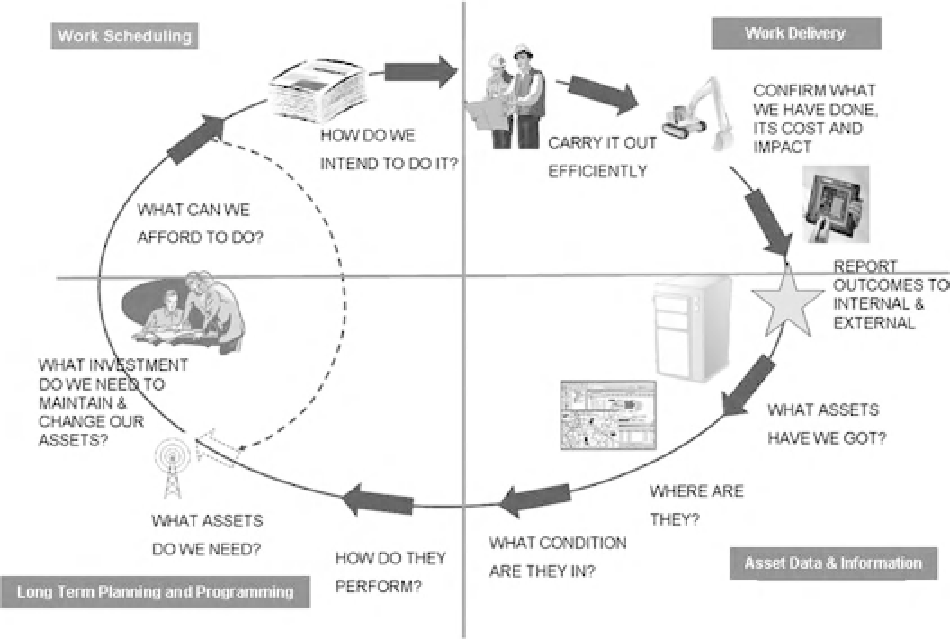Environmental Engineering Reference
In-Depth Information
voted to improving the data in recent years - see,
e.g., Environment Agency 2007a; USACE 2008).
.
Overview of Asset Management
An asset can be described as any feature that is
activelymanaged to reduce the chance of flooding,
including:
.
a linear asset - e.g. a raised defence (levee or
dyke);
.
a point asset - e.g. a pump, gate or culvert trash
screen;
.
the watercourse - e.g. the vegetation and sedi-
ment within a channel;
.
the coastline - e.g. a groyne, beach or backshore.
Delivering the whole-life asset management in
practice as outlined in Figure 15.1, presents a
number of analytical challenges, including:
.
Incomplete understanding of structural/
operational performance: Assets are often a com-
plex composite of structural components with
spatially varying materials and profile. The phys-
ical processes that lead to failure are equally com-
plex and often poorly understood and can be costly
to analyse.
.
Variability of impact: The potential impacts of
failure can vary markedly in space, and hence not
all assets are equally important nor require a com-
mon standard or condition.
.
Decision complexity: The invariable complex-
ity of an asset system and the floodplains they
protect makes expert and engineering judgement
difficult to apply. This often leaves asset managers
with a rational doubt as to which action to take
and when.
Incomplete understanding of the asset base:
The physical dimensions and engineering proper-
ties of the asset base are often unknown or poorly
resolved (although significant effort has been de-
Fig. 15.1
Asset management lifecycle (Environment Agency 2010).

